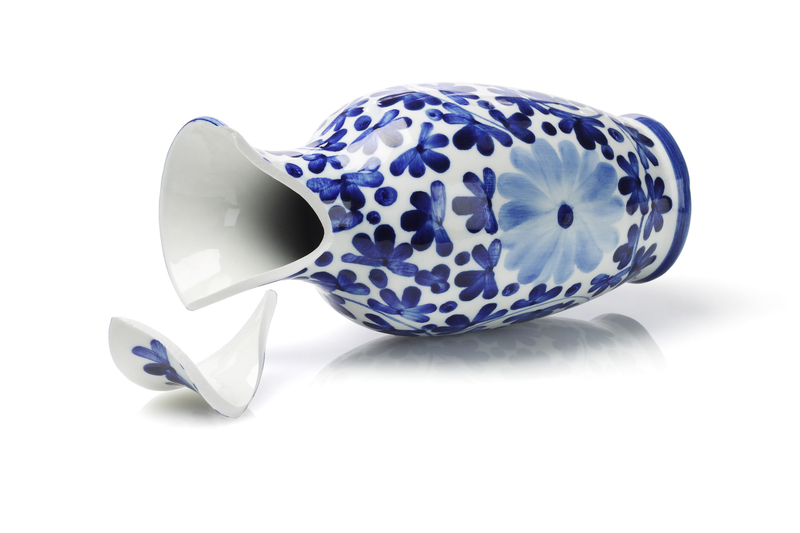Achieving Long-Term Sofa Preservation with Essential Storage Tips
Posted on 17/06/2025
Achieving Long-Term Sofa Preservation with Essential Storage Tips
Are you planning to store your beloved sofa for an extended period? Preserving a sofa's quality goes beyond simply moving it into a storage locker. Whether you're relocating, downsizing, or safeguarding an heirloom piece, long-term sofa preservation requires detailed planning, careful selection of storage environments, and ongoing attention. In this comprehensive guide, we'll discuss effective sofa storage strategies, common pitfalls to avoid, and professional tips to ensure your sofa emerges from storage looking as beautiful as the day you packed it away.

Why Proper Sofa Storage Matters
Sofas are often significant investments, both financially and emotionally. They serve as the centerpiece of most living rooms, bringing together family, friends, and guests. Improper storage can result in structural warping, fabric mildew, pest infestations, and permanent damage. By adopting proven sofa preservation techniques, you can safeguard both the comfort and aesthetics of your furniture for years to come.
Potential Risks of Inadequate Sofa Storage
- Mold and Mildew Growth: Caused by excess moisture and humidity.
- Pest Infestation: Rodents and insects can wreak havoc on upholstery and wooden frames.
- Deformation: Failure to support cushions and frames can lead to warping or sagging.
- Surface Stains and Discoloration: Exposure to light, dust, and chemicals may alter fabric colors.
- Silverfish and Termite Damage: Particularly threatening for sofas with significant wooden components.
Preparing Your Sofa for Storage
Before committing your sofa to storage, diligent preparation is essential for long-term preservation. Here's a step-by-step method to keep your cherished piece in pristine condition throughout its storage period.
1. Thorough Cleaning
- Vacuum Every Surface: Use the upholstery attachment to remove dust, dirt, pet hair, and debris from crevices.
- Spot-Treat Stains: Use a fabric-appropriate cleaner for spills and visible marks. Allow the surface to dry completely before proceeding.
- Condition Leather: For leather sofas, apply a leather conditioner to prevent drying or cracking.
- Disassemble if Possible: Remove detachable legs, cushions, or loose covers for separate storage and easier handling.
2. Protecting Upholstery and Frames
- Wrap with Breathable Fabric: Cover your sofa with cotton sheets or specially designed furniture covers. Avoid plastic wrappings, as they can trap moisture leading to mold and mildew.
- Use Padding: Wrap delicate arms, legs, and corners with blankets or foam to shield against bumps and scratches during transport.
- Elevate Off the Ground: Place the sofa on wooden pallets or bricks to protect against potential water leaks and improve air circulation.
3. Labeling and Inventory
Clearly label all detached parts and keep an inventory. This ensures easier reassembly and avoids the loss of important components.
Choosing the Right Storage Environment for Long-Term Furniture Preservation
Not all storage facilities are suitable for long-term sofa care. Where you store your sofa can have a tremendous impact on the overall preservation and quality over time.
1. Climate-Controlled Storage Units
Fluctuations in temperature and humidity are among the greatest threats to furniture longevity. Climate-controlled storage units maintain stable environmental conditions, which is crucial for preventing mold growth, wood warping, and fabric deterioration.
- Ideal Temperature Range: Between 55-75?F (13-24?C).
- Stable Humidity Levels: 30%-50% relative humidity.
2. Security and Pest Protection
Choose facilities with advanced security measures such as video surveillance and gated access.
- Rodent and Insect Control: Make sure the facility offers regular pest control treatments and inspects for signs of infestation.
- Location: Opt for elevated or indoor units to minimize flooding or weather-related risks.
Sofa Storage Techniques: Positioning and Placement
How you place your sofa within a storage unit is a significant part of effective sofa preservation. The right positioning will reduce unnecessary strain and keep your sofa in great shape for the long term.
1. Avoid Stacking Heavy Items on the Sofa
Never use your couch as a makeshift shelf!
- Do Not Stack Boxes: Placing heavy items on cushions can deform the foam and damage springs.
- Keep Away from Walls: Leave a buffer zone to allow air circulation and prevent fabric abrasion.
2. Store Vertically Only if Necessary
While storing a sofa on its end might save space, it risks stressing the frame and upholstery. Horizontal storage is always best, with legs leveled and pressure distributed evenly.
3. Cushion Care
- Remove and Store Separately: If possible, take off cushions and wrap them in breathable material. Arrange loosely so they keep shape.
- Fluff Periodically: If accessible, visit your storage unit every few months to fluff and rotate cushions for even wear.
Essential Maintenance During Storage
Just because your sofa is in storage doesn't mean you can neglect it. Long-term sofa preservation benefits greatly from occasional check-ups and light maintenance.
1. Regular Inspections
- Visit Every Few Months: Check for signs of moisture, pests, or odor and address issues promptly.
- Airing Out: If possible, occasionally uncover the sofa briefly to allow fresh air in.
2. Pest Deterrents
- Moth Balls or Sachets: Place safe pest deterrents near the sofa (away from fabric to prevent stains).
- Seal Entry Points: Verify the storage area is barricaded against rodents and insects.
3. Humidity and Moisture Control
- Desiccants: Place silica gel packs or commercial moisture absorbers within the storage space.
- No Plastic Wraps: Reiterating, avoid plastic which can sweat and cause condensation damage.
Must-Avoid Mistakes in Sofa Storage
Many well-meaning furniture owners make mistakes that can spell disaster for their long-term sofa preservation efforts. Make sure to side-step these common errors:
- Wrapping With Plastic: It's tempting, but traps humidity and can trigger mold and mildew.
- Skipping Cleaning Steps: Even minor food crumbs attract pests and trigger fabric staining.
- Piling Up Items: Added pressure causes cushions and frames to deform over time.
- Improper Elevation: Storing directly on concrete floors increases moisture risk, especially in older facilities.
- Lack of Documentation: Failing to inventory removable parts can cause headaches later on.
Long-Term Sofa Preservation for Special Materials
The right care often depends on your sofa's material. Different fabrics and builds require slightly tweaked storage strategies.
Leather Sofas
- Condition First: Apply a quality leather conditioner prior to storage.
- Avoid Sunlight and Extreme Cold: Leather cracks with temperature swings and sunlight exposure.
- Breathable Covers Only: Let the leather "breathe" to maintain suppleness.
Velvet and Delicate Fabrics
- No Direct Compression: Prevent pressure marks by keeping storage items off the sofa.
- Drape, Don't Wrap: Lay covers gently to avoid crushing the pile or causing long-term creases.
Wooden Frames
- Wax or Treat: Polish wood with appropriate wax for extra protection.
- Elevate Well: Keep wood off direct floor contact to avoid moisture absorption and warping.
Pro Tips for Long-Term Sofa Storage Success
Looking for expert-approved sofa preservation strategies? These tips, gathered from furniture preservationists, can give your couch the best odds of surviving storage unscathed:
- Declutter First: Storing a sofa that's been used as a catch-all for forgotten items? Clear everything out, so you're only storing the couch and its original components.
- Photograph for Insurance: Take dated photos before storage for insurance purposes and to document its pre-storage condition.
- Custom Crating: For antique or extremely valuable sofas, consider custom-built crates or professional packing services for added protection.
- Monitor Remotely: If your storage unit offers IoT device integration, use sensors to monitor temperature and humidity levels.
- Consult Pros for Long-Term Solutions: Especially if you're storing for over one year, contact professional furniture restorers for additional preservation advice tailored to your sofa's specific needs.

When and How to Retrieve Your Sofa
Once the day comes to retrieve your sofa from storage, remember that proper reintroduction is as important as correct packing.
- Inspect Thoroughly: Check for pests, damage, or odd smells before moving the sofa back indoors.
- Clean Once More: Dust surfaces and vacuum again before allowing use.
- Let It Breathe: Give your sofa several days to air out before placing cushions and covers.
- Reassemble Carefully: Use your labels and inventory to ensure that all detachable parts are securely and correctly reconnected, avoiding undue strain or incorrect fitting.
Conclusion: Setting Your Sofa Up for Long-Lasting Beauty
With the right knowledge and planning, achieving long-term sofa preservation is achievable for everyone--not just professional restorers. From selecting the right storage unit, preparing and packing carefully, maintaining regular checks, and avoiding common pitfalls, you can ensure your sofa remains comfortable, clean, and attractive for generations. Invest a little more time in storage preparation, and your sofa will reward you with years of reliable service and style.
Remember, the most important factor in sofa preservation is your attention to detail. Follow these essential storage tips, and you'll save yourself costly repairs or replacements down the line.



